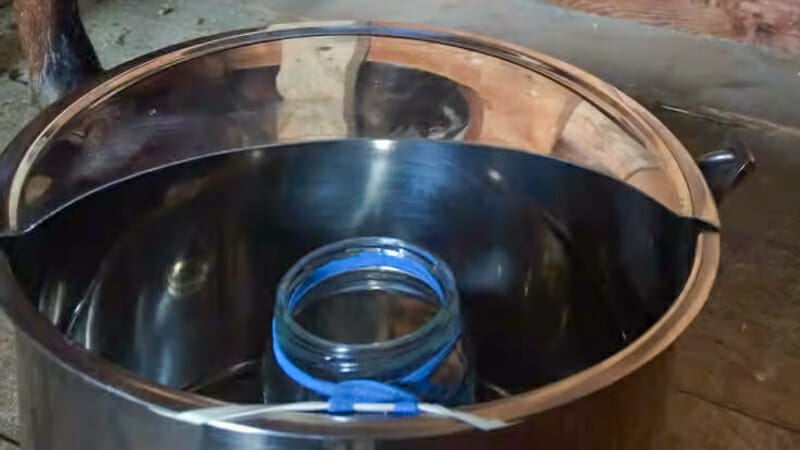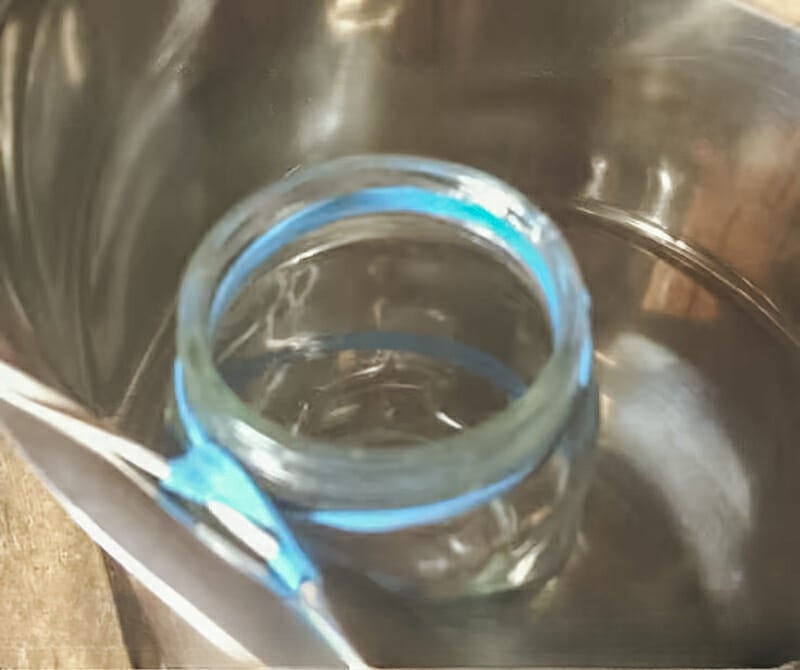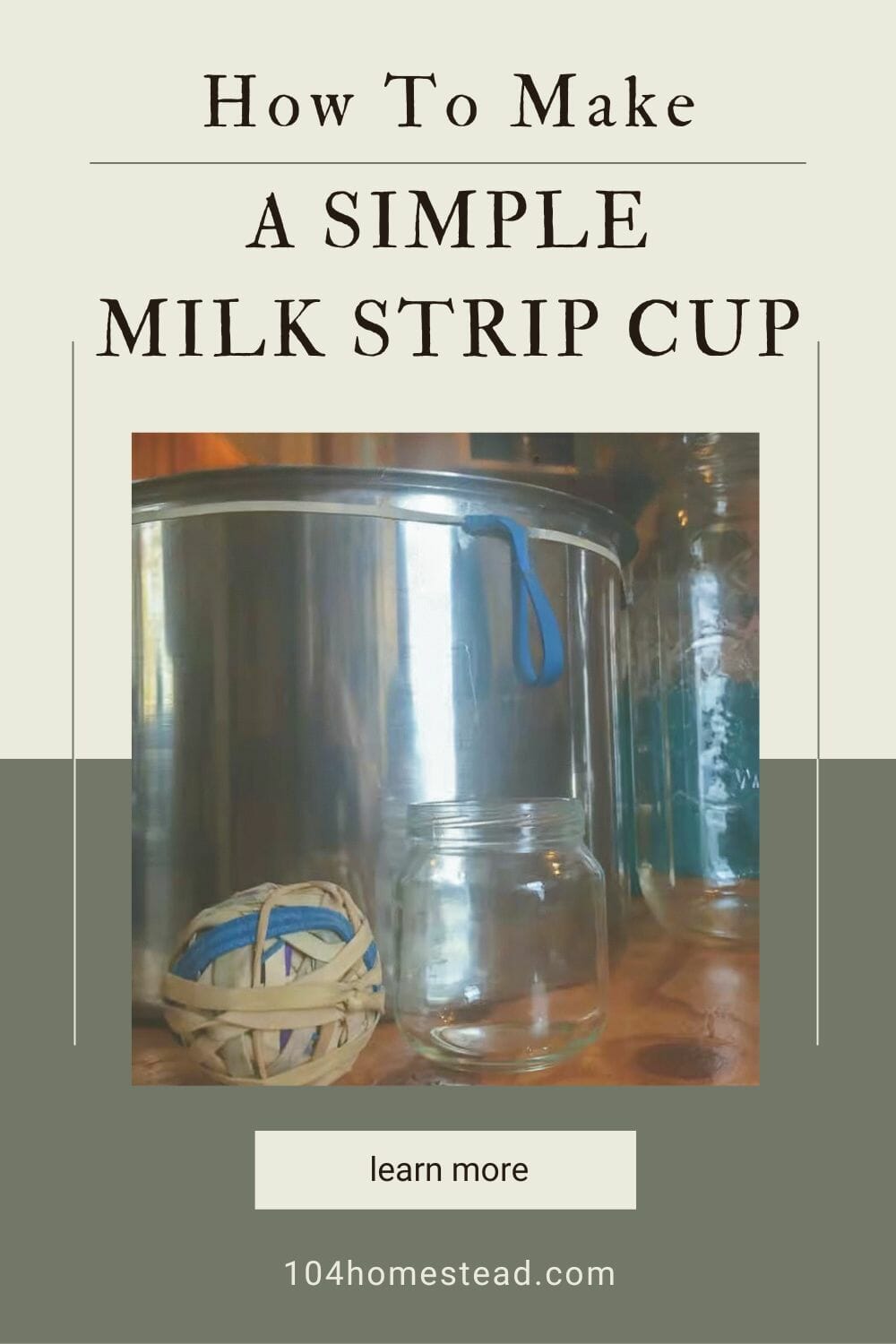A Simple DIY Strip Cup Trick for Milking [with video]
Why do you need a strip cup for milking your dairy goat and why do I recommend you make one instead of buying one?

The benefits of goat milk are astounding! It can almost make a person giddy just thinking about it. But truly, it is good to know the truth about goat milk because there are so many misconceptions floating around:
- Goat milk is gross
- It’s goaty tasting
- And how did my brother-in-law describe it from his time overseas in the military? “Chunky and sour”?
Well (tsk), my goat milk doesn’t taste like that. I bet yours doesn’t, either.
If you aren’t convinced about goat milk yet, you might be surprised at the astonishing benefits of goat milk, and when you add the benefits of raw milk, your body will thank you immensely!
Set Yourself Up for Success
We can do a few things as goat milkers and milkers in general to ensure that our milk is as fresh and best tasting as possible.
Chill the Milk Quickly
After milking your goat, sheep, or cow, the milk should be immediately strained and refrigerated or frozen. The faster you can get to a colder temperature, the better.
Here is a great explanation: Great Tasting Goat Milk
Your Goat’s Diet
There is no getting around the fact that what you eat affects the health of your body. And as a lactating mother myself, I know that what I put into my body as food affects the output and quality of milk I provide for my baby. This same principle is true for the animals you milk. What they eat affects the nutrition of their milk and the taste.
Cleanliness is Key
The utensils used must be kept clean and sterile. And the goat’s udder and teats should be thoroughly cleaned before milking. You want to have everything clean to prevent cross-contamination. And a strip cup should be used to catch the first streams of milk from the teat.
Why should a strip cup be used?
That is a really good question.
- Any abnormalities, such as blood or clots, will be detected in the first few streams of milk.
- You can use a strip cup for mastitis detection.
- The first few streams of milk contain the most bacteria from the teat canal and dirt.
When life is already so full of house, animal, and garden chores, it can be overwhelming to remember that one more thing, right?
Although I have never trained a young goat (yet) to milk, my active imagination conjures up many wild scenes of crying and spilled milk.
I have a doe who is very touchy. If a young helper decides to pet her while she is being milked, a fly lands on her leg, or you stop milking her for any reason, she may decide she is done. Those back legs can sure clam up! And on several occasions, she has managed to step into the bucket.
So starting to milk into a small cup, then removing the cup, and then bringing in the larger capacity pail and starting over can be a hassle.
But, I have an idea for you that has worked well for me! (Drum roll please)
Introducing… the simple strip cup milking hack!
You only need your milking pail, two rubber bands from your rubber band ball, and a small container.

I have excess baby food jars lying around, so that works ideal for me. Some people prefer having a black strip cup because the contrast between the black cup and white milk makes it easy to see any problems, such as mastitis. Most “official” strip cups, which can range from $7-$20, are also black. From my perspective, I can easily see anything wrong with the milk in this glass container.

I contemplated using wire, but that could potentially scratch my stainless steel pail. And a string might work, but knots loosen easily, and I didn’t want to be continually re-tying it. So, rubber bands, it is! Take a peek at how it works in action and see if it’s a good solution for you!
Learn how to milk a goat by checking out There Are 100 Ways to Milk a Goat – Find the Right Way for You
If you’ve found value in this blog post and enjoyed reading it, why not share it with your Pinterest community? Pin the image below and spread the love!


thanks for showing us. Thank you